PEOPLE
PhD Students

Antarctic Bottom Water formation and dynamics in a changing climate
Program 1: Circum Antarctic and East Antarctic
My PhD project focuses on Antarctic Bottom Water (AABW) formation and dynamics in a changing climate. This water mass is a major component of the ocean’s meridional overturning circulation, redistributing heat, salt, nutrients, and carbon globally. AABW is mostly produced in coastal polynyas around the Antarctic continent and spreads northward in the abyssal layer, but most global ocean and climate models are not simulating this process correctly and instead form AABW via open-ocean convection. There are also no long-term observations of AABW formation on the Antarctic shelf due to the challenging environment, especially in winter. I am analysing the formation and export of AABW in the ocean–sea-ice model ACCESS-OM2-01 with a global horizontal resolution of 0.1° where the formation of AABW is accurately represented. In my first PhD project, I focus on the interannual variability of AABW formation and export and its sensitivity to atmospheric forcing and sea ice to advance our understanding of the mechanisms controlling the interannual variability of AABW formation.
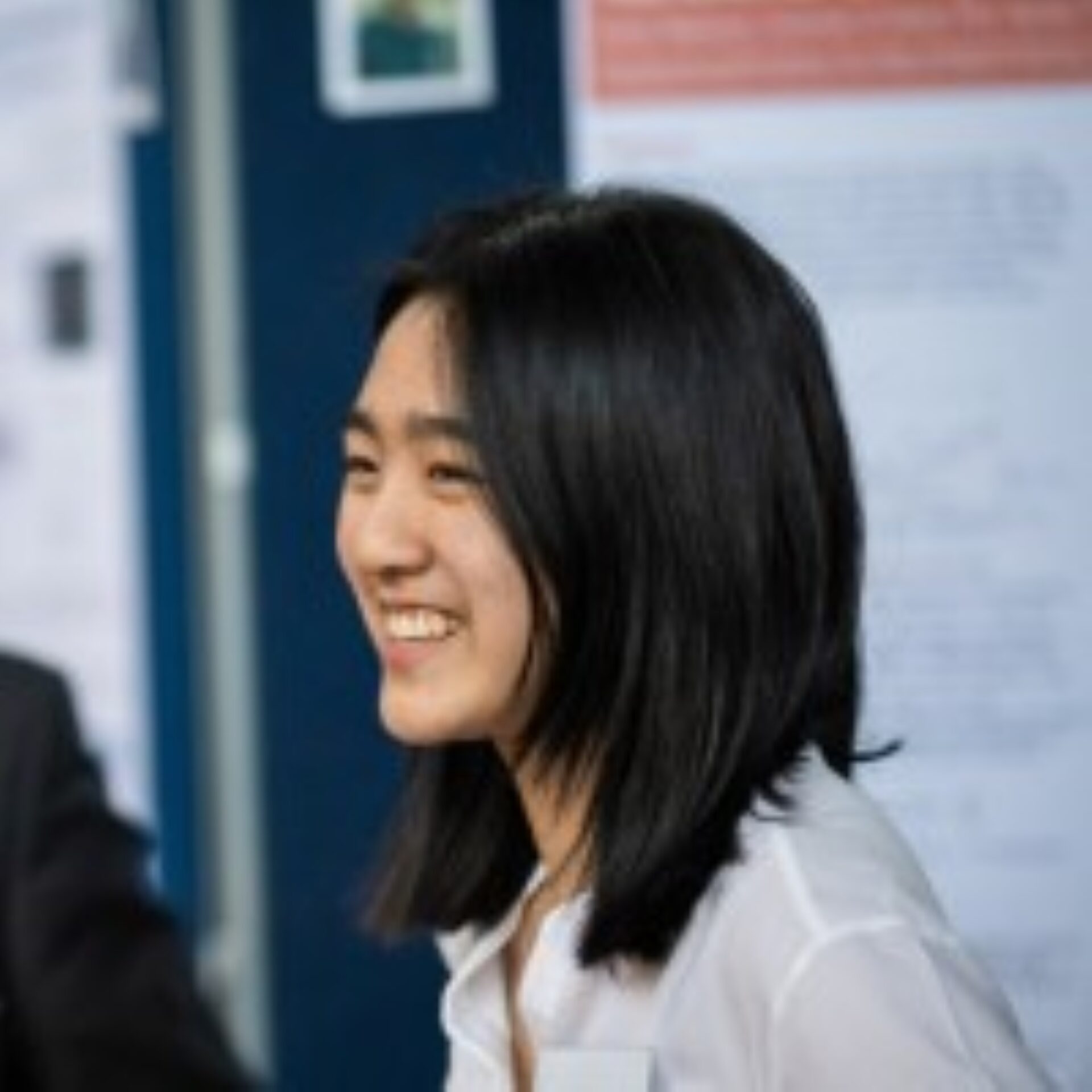
The Dynamics of the Antarctic Slope Front
Program 1: Circum Antarctic and East Antarctic / Program 3: Sub-regional and Regional Antarctic Margins
Ellie’s Ph.D. project utilises idealised models of the Antarctic Slope Front regimes to represent the key ocean dynamics of the Antarctic margin. The project aims to understand how topography, in the form of canyons and cavities, as well as wind and buoyancy forcings can influence heat transport onto the Antarctic continental shelf., which has implications on basal melt at the Antarctic Margin. Most geographical sections of the ocean around the Antarctic margin can be classified into the Antarctic Slope Front regimes. Hence, the study of the circulation, variability and forcings in these regimes are relevant to many sections of the Antarctic margin and the research of ACEAS.
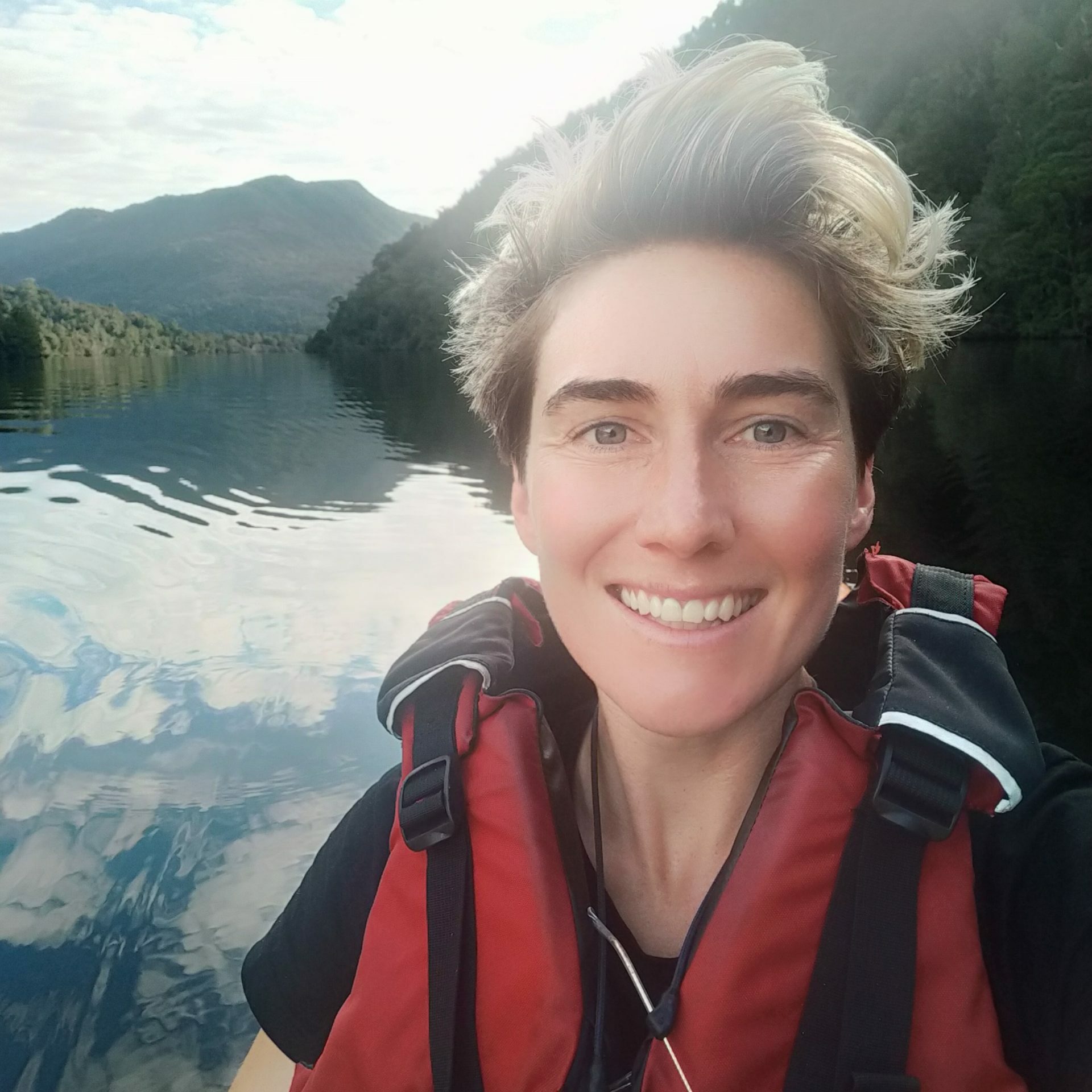
Southern Ocean phytoplankton calcification
Program 1: Circum Antarctic and East Antarctic
This project will investigate the relevance of calcifying phytoplankton on contemporary and future carbon cycling in the Great Calcite Belt. It will utilise satellite and BioGeoChemical-Argo (BGC-Argo) profiling float data to map regional imprints of calcifying phytoplankton on nutrient and carbon stoichiometry. It will further use laboratory incubations to assess the influence of calcifying phytoplankton on retention (as opposed to deep sequestration) of carbon and alkalinity in the surface with the goal to generate a mechanistic understanding of retention-versus-export processes. The project will also generate flow cytometric and/or microscopic datasets of phytoplankton communities from the sub-Antarctic during ship voyages to ground-truth characterisations of the phytoplankton community derived from BGC-Argo and satellite data. This project ties into Project 1 of ACEAS - determining the CO2 uptake capacity of the sub-Antarctic Southern Ocean with the use of BGC-Argo and satellite observations .
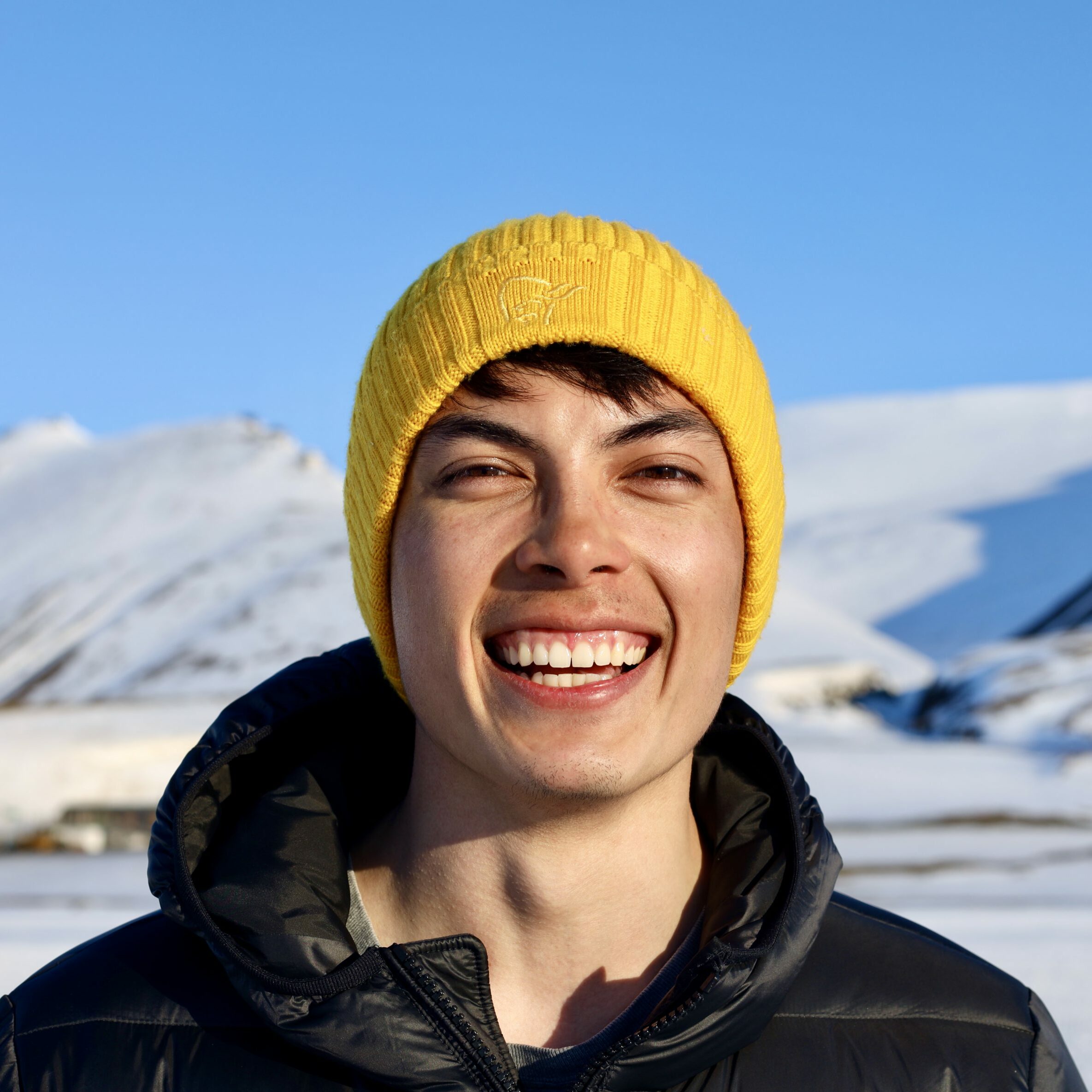
The Ice-Rock Interface Beneath the Great Ice Sheets of East Antarctica Using Seismic Waveforms
Program 1: Circum Antarctic and East Antarctic / Program 3: Sub-regional and Regional Antarctic Margins
My research works toward modifying and developing a computational workflow to model seismic waves propagating through the ice-bedrock interface in the Antarctic environment. By doing so, I aim to better constrain the sensitivity of these structures and features to seismic signals and therefore help predict the expected data return from seismic surveys within the Antarctic interior. My project particularly focuses on the Aurora Basin and Knox Coast region of East Antarctica, where current geophysical observations are sparse and little is known within the deep subglacial basins. My research output will aim to inform upcoming field campaigns within the Denman-Scott area, optimizing the placement of new passive seismic instruments to monitor cryoseismic signals and map the subsurface structures.

How the complexity of continental breakup controls ocean circulation
Program 1: Circum Antarctic and East Antarctic / Program 3: Sub-regional and Regional Antarctic Margins
With continents breaking apart or colliding, some seaways between different major ocean basins would open or close to control global ocean circulation. Especially, the opening of polar seaways like Tasmania gateway and the Drake Passage during the past 30-50 million years not only change polar ocean circulations, but also are proposed to potentially link to the onset or expansion of glaciation in the Antarctic. Previous studies have addressed the impacts of gateway opening on ocean circulation from regional to global scales. These model simulations typically compare a completely closed seaway with an open one to investigate the role of the gateway in triggering the onset of ocean currents such as Antarctic Circumpolar Current and Meridional Overturning Circulation. To test the sensitivity of ocean current pattern to gateway parameters such as depth and latitude relative to wind bands. We will conduct sensitivity tests using eddy-permitting models with paleo-bathymetry to ensure a state-of-the-art representation of ocean dynamics. The results of these tests will have the potential to enable us to re-interpret empirical observations of oceanographic flow through the ocean gateway.

The Origin and Fate of Subantarctic Mode Water and Antarctic Intermediate Water in the Southern Ocean
Program 1: Circum Antarctic and East Antarctic
I am interested in contributing to the ACEAS research program to continue and hopefully extend the projects described above, in particular, to better understand how Subantarctic Mode Water and Antarctic Intermediate Water absorb and store heat into the Southern Ocean. Specifically, I am interested in contributing to research that improves our understanding of how the increased ocean heat uptake is distributed by basin and across water masses, and the related processes at play, such as vertical heat transport via submesoscale / small mesoscale ocean dynamics. These projects will contribute to the ‘Heat and Circulation (2, 3)’ and ‘Detection and Attribution (4)’of Program 1 at ACEAS.

Non-linear controls on ocean circulation and mixing in marginal ice zones
Program 1: Circum Antarctic and East Antarctic
The overturning circulation of the Southern Ocean is a critical aspect of global climate through its dominant role in air-sea heat and carbon exchange. It has been suggested that non-linear processes control the mixing between deep and surface water to generate intermediate water in the Southern Ocean. In this project I will investigate how non-linear mixing processes influence the water mass properties of the marginal ice zone and how they impact the upwelling of deep waters in the Southern Ocean. I will exploit both in-situ observations and both simple theoretical and numerical models. Fundamental understanding gained will be used in conjunction with global climate models to quantify the sensitivity of this system in a changing climate.
This work is part of project 1, specifically trying to address the role of heat and circulation in the circum and East Antarctic.

Glacier change detection using seismology and machine learning
Program 1: Circum Antarctic and East Antarctic / Program 3: Sub-regional and Regional Antarctic Margins
Water at the ice-bedrock interface is a key control on glacier basal motion and subsequently ice sheet mass balance. However, key hydrological processes affecting this interface can be transient or hidden from view, so difficult to detect through satellite or direct observation. The primary goal of my research is to further develop passive seismic techniques for the continuous monitoring of active glaciers. A focus of the research will subsequently be on those hydrological processes that can both generate seismic signals, and influence ice sheet stability.
To achieve these goals and make passive seismology a viable method for characterising glacial hydrology, a variety of modern and innovative techniques from seismology, computational fluid dynamics, and machine learning will be utilised. This also leaves the potential for developed methodology to be extended to more general problems in environmental seismology. We first aim to model the flow of subglacial water using computational fluid models, such as smoothed particle hydrodynamics, and then use classical seismological methods to model the resultant surface expression. We then aim to use insights from these modelling methods to classify observational data according to the causal mechanism, with unsupervised machine learning playing a key role in this analysis.
This research primarily aligns with the goals of ACEAS Program 1 (Circum Antarctic and East Antarctic), in which Professor Reading is co-lead. It is particularly concerned with the focus areas of Sea Level and Detection and Attribution. The work also has links with Program 3 (Sub-regional and Regional Antarctic Margins). As a part of this work, I am linked with the ‘Sub-ice continent’ working group.
Radiolarian contributions to the Southern Ocean silica cycle and a modern appraisal of palaeo-proxy use in the fossil record
Program 2: Regional East Antarctic and its Provinces
The aims of my PhD project are to expand our knowledge regarding modern Southern Ocean radiolarian assemblages and to use the radiolarian record found in deep sea ocean sediment cores as the primary proxy to reconstruct palaeoceanographic parameters in the Sabrina Coast region, East Antarctica.
I have compiled a surface sediment radiolarian dataset for the Southern Ocean and am using this data to quantify radiolarian diversity and richness and exploring how we can utilise this in future palaeoceanographic work, and categorising modern radiolarian assemblages into biogeographic provinces and trying to determine the taxonomic differences, and environmental factors, responsible for province partitions.
This knowledge will then be applied to the radiolarian record found in sediment cores retrieved from the Sabrina Coast shelf and slope environments to investigate the viability of producing radiolarian-based palaeotemperature estimates from cores so near the Antarctic continent and to reconstruct water mass movement on the Sabrina Coast slope and shelf throughout the Holocene.

Improve the resolution of Antarctic ice sheet mass balance
Program 1: Circum Antarctic and East Antarctic / Program 3: Sub-regional and Regional Antarctic Margins
My research aim is to improve the resolution of ice sheet mass balance estimates in the Antarctic. The project focuses on the gravity method, which estimates mass variation using the measurement from the Gravity Recovery and Climate Experiment missions (GRAEE and GRACE-FO). The GRACE and GRACE-FO missions allow direct measurements of monthly gravity variation induced by changes in ice sheet mass. However, the spatial resolution of this method is not good enough to show the real regional mass change, especially for regions that experience high mass variation or near the coast. To overcome this limitation, I will try to utilise ice height measurement from satellite altimetry, which has a higher spatial resolution, in the gravity method. This project will focus on regions with high mass change, such as East Antarctic. I will also investigate the regional mass variation of the Totten Glacier and Denman region.
These high-resolution mass balance estimates align with programs 1 and 3 of ACEAS, as they allow a better understanding, detection and attribution to improve sea level projection.

Deep Earth Controls on Glacial Isostatic Adjustment in East Antarctica: Probing Remote Worlds using Seismic Signals
Program 1: Circum Antarctic and East Antarctic
Currently, East Antarctica contains a sparse distribution of isolated seismic recording stations, and much of East Antarctica has not been thoroughly explored using seismic signals. This makes it a challenge to constrain the material properties of the deep Earth beneath East Antarctica. Accurate models of glacial isostatic adjustment require knowledge of the structure and properties of the crust and upper mantle. My research aims to develop a new methodology for the use of seismic signals from isolated stations in order to constrain the material properties of the deep Earth beneath East Antarctica, focusing on stochastic inversion techniques. The outputs from this research will help to constrain predictions from models of glacial isostatic adjustment and ultimately improve future sea level projections.

The composition and evolution of diatoms around Antarctica inferred from marine sedimentary ancient DNA
Program 3: Sub-regional and Regional Antarctic Margins
My project focuses on the reconstruction of diatom communities using sedaDNA from Antarctica. Through my study I hope to generate significant new knowledge about the response of Antarctica’s most important marine primary producers to past environmental change, leading to improved predictions about their future adaptation to the ongoing climate change, ultimately guiding ecosystem models and conservation efforts for Antarctica.
Hence, I believe my Ph.D. research aligns well with the activities planned by the Paleo-Reconstructions Working Group within Program 3 (Sub-regional and Regional Antarctic Margin) of ACEAS

Antarctic Krill sedaDNA: Probing ancient Antarctic krill populations
Program 3: Sub-regional and Regional Antarctic Margins
Antarctic krill are a keystone species in the Antarctic marine ecosystem which is being threatened by climate change and commercial fisheries. My research aims to explore the population dynamics of Antarctic krill in the past through the use of sedimentary ancient DNA. This includes their abundance and distribution within the Antarctic marine ecosystem. The ability to study and begin understanding the population dynamics of Antarctic krill to past environmental changes is critical to improving predictions of how they will change in the future and assessing potential impacts on their sustainability. Krill leave no fossil record for microscopic investigation resulting in no paleo-studies which target them as of yet, but I hope to make this a realistic goal with the use of sedimentary ancient DNA.
This project primarily aligns with the Program 3 (Sub-regional and Regional Antarctic Margin) and the activities planned by the Paleo-Reconstructions Working Group.

Tracking human and natural changes in the ocean salinity in the southern hemisphere: evidence for Earth's accelerating water cycle
Program 1: Circum Antarctic and East Antarctic
Ocean salinity is a key state variable of the oceans and reflects the imprint of precipitation and evaporation over the global oceans. Global changes of salinity in the global oceans are significant and widespread and the Southern Ocean has distinctly changes to other regions. The evidence is that these changes are driven by changing melt from Antarctica and from changing rainfall patterns (and evaporation) over the global oceans. These changes in the are likely to be a response to human influence in the climate system. In this project, I will mainly focus on: a) “Understand changes to the atmospheric circulation (including heat and moisture fluxes) across timescales associated with anthropogenic forcing, regional and remote variability. “ and b) “Determine how circulation changes/climate modes and other local processes affect ocean circulation at the Antarctic margin.”

Modelling basal melt in Antarctic ice shelf cavities
Program 1: Circum Antarctic and East Antarctic
My project aims to use both idealised and more realistic ocean models to explore the physics of Antarctic ice shelf-ocean interactions and the ocean circulation in and near ice shelf cavities, which are important for predicting future sea level and climate. I am particularly interested in the implementation of these ice-ocean interactions in the newest generation of ocean and climate models. My project aligns well with the focus of ACEAS Program 1 (Circum Antarctic and East Antarctic) in its aim to quantify heat transport and Antarctic melt rates, as well as ACEAS Program 3 (Sub-regional and Regional Antarctic Margins), in its small-scale process focus which includes ice shelf cavities.

A coupled Earth systems approach ti modelling ice sheet change and its implications
Program 1: Circum Antarctic and East Antarctic
Estimating the ice sheet mass loss over the Antarctic Ice Sheet is a key Earth system interaction governed by global warming. However, ice sheet mass balance estimates are fraught with uncertainty. The primary objective of my project is to address the risks in predicting changes in the total ice sheet mass balance and then examining methodologies to reduce the sources of uncertainty. My thesis will indirectly focus on Antarctica’s impact to global sea level through studies such as understanding the risks associated with estimating the ice sheet mass balance using methods such as satellite altimetry, and how these sources of uncertainty can be reduced in the future.
Broadly speaking, I will investigate the complex interactions between the ice-atmosphere-ocean, including forcings and feedbacks. I will apply computational, geophysical, and interdisciplinary approaches to advance the understanding of these interdependent Earth systems with an emphasis on modelling ice sheets and outlet glaciers. There will be a component to better constrain results from satellite altimeter data with ground-based observations and incorporating insights from the evolution of the firn. I will (i) explore potential avenues for coupling different technologies to bridge the information gap in the spatial and temporal coverage over the AIS, and (ii) address the uncertainty introduced by variations in the firn.

Understanding the circulation dynamics and water mass trends in abyssal Southern Ocean
Program 1: Circum Antarctic and East Antarctic
My first PhD project focuses on the Antarctic Bottom Water pathways and their driving mechanisms in the Australian-Antarctic Basin of the Southern Ocean. Antarctic Bottom Water originates in several areas over the Antarctic shelf and forms a lower limb of the meridional overturning circulation controlling the Earth’s climate. After its formation on the shelf, it overflows the shelfbreak and, due to high density and under the effect of gravity, sinks into the abyssal ocean where it spreads northward and eventually covers more than 50% of the ocean floor.
Despite the importance of the Antarctic Bottom Water for the global climate, there are no long-term observations because of Antarctica's remoteness and harsh conditions. I study Antarctic Bottom Water originated in Eastern Antarctica in the ACCESS-OM2 model with 0.1-degree horizontal resolution aiming to find accurate pathways through which the water enters the abyss and to understand the physical mechanisms controlling them.
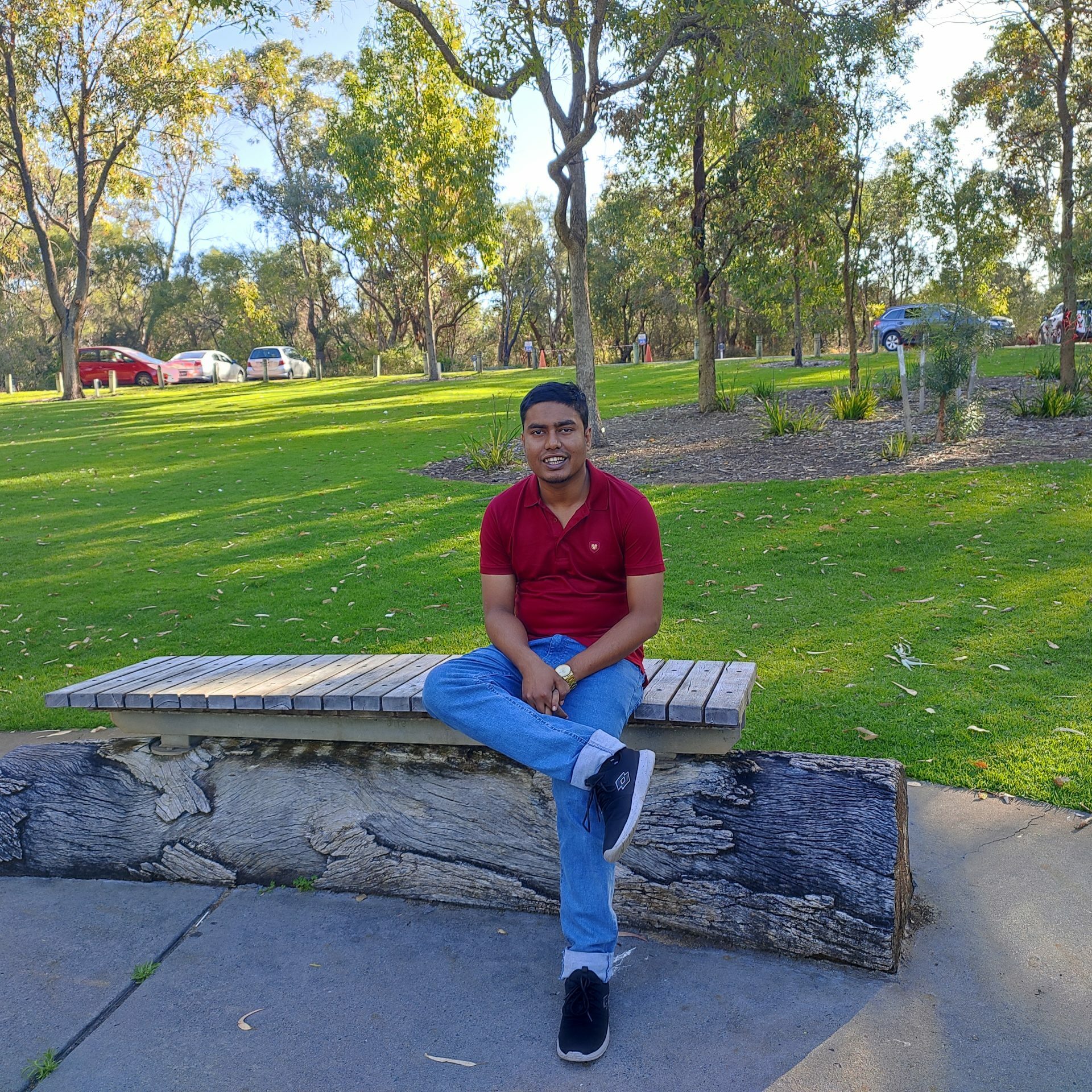
Long-term changes of phytoplankton in the Southern Ocean
Program 1: Circum Antarctic and East Antarctic / Program 2: Regional East Antarctic and its Provinces
This project will explore the variation of decadal responses and the dynamics of the Southern Ocean phytoplankton using multi-decadal records of satellite observations and large-scale climate drivers (like El Nino/La Nina). This study will play a crucial role in understanding the long-term changes in the ecosystem of the Southern Ocean. 25-year records of satellite-derived physical parameters (sea-surface temperature, wind speed and sea-surface height) and biological parameters (phytoplankton chlorophyll concentration) will be used to conduct this experiment. In addition to these parameters, outputs of ocean models will also be analysed to assess the temporal signals and relationships using statistical and/or machine learning techniques. The outcomes of this project are expected to be helpful in evaluating the impact of various scenarios of change in the physical environment on future changes in phytoplankton.
The activity is part of programs 1 (Circum Antarctic and East Antarctic) and 2 (Regional East Antarctic and its Provinces) of the ARC Australian Centre for Excellence in Antarctic Science (ACEAS).

Understanding the mechanism of Southern Ocean deep chlorophyll maxima
Program 1: Circum Antarctic and East Antarctic / Program 2: Regional East Antarctic and its Provinces
Deep chlorophyll maxima (DCMs) are a phenomenon that widely consists in the ocean that the chlorophyll has maximum concentration below the sea surface. A biomass maximum is existing with DCMs simultaneously, affecting the Southern Ocean food-webs and carbon cycle. DCMs are mostly studied in tropical and subtropical ocean, which is mainly influenced by the surface nutrient limitation. The formation of DCMs in the Southern Ocean is different with that in tropical regions. Southern Ocean is such an HNLC area, which is caused by the low iron abundance on the surface water, which could cause DCMs. Additionally, light, temperature and grazing are regarded as the proposed factors impacting the Southern Ocean DCMs. In this project, I will use biogeochemical model to simulate the seasonal variation of chlorophyll distribution in Southern Ocean to determine how DCMs form. Also, I will do some sensitivity tests to show which factor(s) drive the formation of Southern Ocean DCMs and how the Southern Ocean DCMs influence the marine biological production and the global carbon cycle. This project aligns with ACEAS Program 1 and 2, help understanding the drivers of DCMs and the contribution to Southern Ocean productivity and biogeochemical cycles.
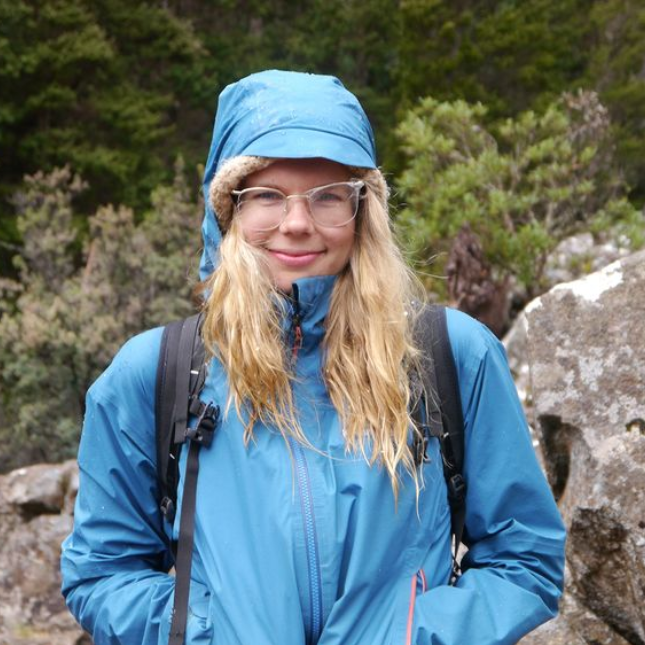
Environmental drivers of iron speciation and implications for the ecophysiology of East Antarctic phytoplankton
Program 2: Regional East Antarctic and its Provinces
The biological carbon pump (BCP) is one of many pumps in the Southern Ocean that drives the uptake and export of carbon dioxide (CO2). Within the BCP, phytoplankton convert atmospheric CO2 to organic carbon via photosynthesis, which can be exported to depth through physical and biological processes. However, phytoplankton growth in the Southern Ocean, and thus the strength of the BCP, is limited by micronutrients (such as iron) and light.
Alongside seasons with extremely variable light, the Southern Ocean is considered iron limited. Over 99% of dissolved iron is bound to iron-binding ligands, which play a key role in sustaining iron in the surface ocean. Although some phytoplankton can access iron bound to ligands, research has shown that the complexation of iron may decrease bioavailability to some species, depending on the type and strength of the ligand. Environmental factors, such as light, can also impact the accessibility of bound iron. However, further research is needed to understand the coupling of light availability and iron speciation, and how this may impact phytoplankton communities and the seasonal efficiency of the Southern Ocean’s BCP. This project aims to fill this research gap by combining laboratory- and field-based experiments, with observational process studies, to untangle the complex nature of light and iron availability on Antarctic phytoplankton communities. Hence, this research aligns with ACEAS project 1 ‘Circum Antarctic and East Antarctic’, by accessing the iron-related drivers of phytoplankton production, and how this impacts the BCP.

Bajrang Chidhambaranathan
PhD Student
E: bajrang.chidhambaranathan@student.unimelb.edu.au
Social Links
Understanding the Role of Southern Ocean Circulation in Antarctic Ice Melting
Program 3: Sub-regional and Regional Antarctic Margins
Understanding the Southern Ocean's complex dynamics, particularly its role in the Earth's climate system, poses a significant challenge. While Global Climate Models (GCMs) have been traditionally used, they struggle to help understand the intricate physical processes within the Southern Ocean. These processes are vital, especially in the context of global warming and its impact on the Antarctic ice sheets, which has profound implications for sea-level rise and the planet's ecosystems.
To address these challenges, my project involves an approach combining observational data and advanced numerical simulations. Observational resources like Argo floats, ocean mooring data, and gridded datasets can offer valuable insights. On the simulation side, high-fidelity numerical techniques, including Direct Numerical Simulations (DNS) and Large Eddy Simulations (LES), are employed to model the flow physics, turbulent mixing, and mesoscale dynamics.
The power of this approach lies in its application of dynamical similarity principles. By scaling both planetary mechanisms and small-scale processes, it achieves a well-resolved computational range. This approach, akin to laboratory studies in rotating convection and stratified circulation, extends solutions from small turbulence scales to encompass large-scale processes. The result is the generation of energy-conserving flow solutions, offering a deeper understanding of the Southern Ocean's pivotal role in the Antarctic ice sheet melting. This project ties well with Program 3 – Subregional and Regional Antarctic Margins.

Paleoceanographic changes in the Antarctic Southern Ocean across the Mid-Pleistocene Transition
Program 3: Sub-regional and Regional Antarctic Margins
The Mid Pleistocene Transition (~1.25 – 0.65 Myr BP) represents a period in which the climate underwent a significant shift, transitioning from roughly symmetrical glacial cycles (41ka duration) to stronger, saw-toothed cycles (100ka duration). With the absence of any significant change in solar radiation forcing, it is thought that the cause of this transition may be a result of the internal reorganisation of the Earths systems. Given the leverage of the Antarctic Zone on ocean-cryosphere-carbon interactions, the paleo-information preserved by marine records in this region can provide context as to the changes which were taking place during the MPT. Using a multi-proxy approach, this project intends to reconstruct biological activity, ocean ventilation and ice sheet behaviour across glacial cycles in search of evidence of the internal restructuring of the Earth systems and determine how the interactions between these systems may have influenced the changing climate.
The scope of this work falls in line with Program 3 – Sub-regional and Regional Antarctic Margins. Understanding the interactions between the ocean-cryosphere-carbon systems remains a pivotal aspect in informing future climate projections. Recognising this, we intend to use these paleo reconstructions to better understand the response of the Antarctic ice sheet to periods of intense warming and gain further insight into climate feedback mechanisms.

Southern ocean natural iron fertilization - Quantifying the biological pump in the Southern Ocean in regions of natural iron fertilization
Program 1: Circum Antarctic and East Antarctic
The aim of my PhD project is to quantify the biological pump in Southern Ocean regions of natural iron fertilization. Phytoplankton growth is the cornerstone of the oceans’ biological carbon pump – an important mechanism for transporting carbon into the deep ocean. In the Southern Ocean, this pump is weakened by low levels of dissolved iron – an essential nutrient for photosynthesis. However, there are several regions that experience natural iron fertilization, where large scale phytoplankton blooms are frequently observed. These include (1) island wakes such as downstream in the Antarctic Circumpolar Current from the Kerguelen plateau, Crozet Island and South Georgia Island; (2) the seasonal ice zone and (3) places impacted by hydrothermal vents. Biogeochemical (BGC) Argo floats can now be used to look in detail at the fate of biogenic material produced in the euphotic zone. We will apply and adapt proven methods to calculate the characteristics of the biological pump in Southern Ocean regions of natural iron fertilization.
By improving our understanding of the biological carbon pump my PhD project contributes to ACEAS program 1.

The effects of climate change on microbial communities, particularly viral communities in Antarctic sea ice
Program 2: Regional East Antarctic and its Provinces
After completing a BSc and MSc in Physics with a focus on astrophysics at Heidelberg University (Germany), I had the opportunity to join the physical oceanography team on RV Polarstern to investigate the iron induced chlorophyll bloom in the vicinity of South Georgia Island. The experience during this three-month voyage on the Southern Ocean inspired me to shift focus and pursue a PhD project in Southern Ocean Oceanography and climate science. The ocean, and its role in the global carbon cycle, is what fascinates me.
Moving forward I am excited to apply my background and expertise in hydrodynamics, thermodynamics and modelling to investigate this fascinating multidisciplinary research area.
Participating in the voyage first sparked my interest in the role of iron in the Southern Ocean and I now continue working on this fascinating topic as a PhD student.
I wish to contribute to a deeper understanding of the role of physical processes for the carbon pump and the overall effect on the global climate.

Climate variability in satellite observations of Antarctic ice sheet change
Program 1: Circum Antarctic and East Antarctic / Program 3: Sub-regional and Regional Antarctic Margins
As a result of global warming, sea level rise poses a threat to low-lying coastal communities and islands. The rise in sea level is mostly attributed to the rapid melting of ice glaciers in Antarctica and Greenland. In the past decade, rapid ice loss has been reported over Antarctica and is expected to overtake Greenland, becoming the biggest contributor to global mean sea level rise.
The polar region is characterised by high natural climate variability. Much of this variability can be linked to large-scale modes of climate variability, which affect moisture flux and heat transport. In recent decades, Antarctic mass loss and contribution to global mean sea level rise studies have seen growing attention. Despite the numerous studies currently ongoing on Antarctic ice mass loss, the processes and dynamics driving interannual and decadal ice mass variability are still not fully understood. Few studies have attributed recent Antarctic ice mass loss to climate variability; however, overall, the large-scale climate variability in Antarctic ice mass loss is not fully understood, hence the need for further studies.
My research project aims at investigating the role large modes of climate variability play in recent ice mass loss in Antarctica. Plan to achieve this objective by collating climate indices with observed GRACE ice mass changes. Climate indices are strongly associated with atmospheric circulation patterns, influencing the transport of moisture and heat, which ultimately impact ice mass balance. Understanding the relationship between climate indices and interannual ice mass change will improve ice mass loss prediction and its subsequent contribution to sea level rise.
This PhD aligns with ACEAS Project 1, specifically assessing risks to the effective prediction of changes to ice mass, ocean, and climate that arise between systems, across boundaries, variability, and instability/threshold changes.

Oceanic Regulation of Phytoplankton Species in the Southern Ocean
Program 1: Circum Antarctic and East Antarctic
The phytoplankton group plays a crucial role in regulating carbon fixation and export within the ocean. Due to their sensitivity to light, temperature, and nutrient availability, both physical forcing and environmental variables significantly influence the phenology and composition of phytoplankton communities in marine ecosystems. With these factors undergoing simultaneous changes in the Southern Ocean because of shifting climatic conditions, there will likely be concurrent impacts on carbon acquisition capacity.
My Ph. D project will observe the long-term (multi-decadal) phytoplankton group in the Southern Ocean by using satellite remote sensing and Biogeochemical-Argo Float data. Both empirical and semi-analytic algorithms will be employed in remote sensing methodologies to estimate phenological shifts and alterations in phytoplankton composition.
The output of this project is expected to understand on how climate change will affect the carbon acquisition capacity in the Sothern Ocean.
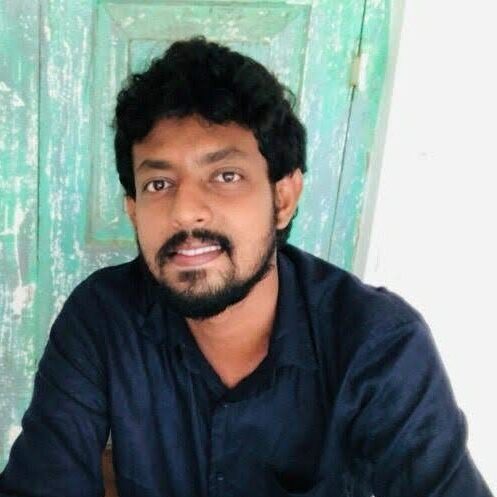
Laboratory study on the role of convection and currents in driving the melting of ice shelves
Program 3: Sub-regional and Regional Antarctic Margins
The mass balance of the Antarctic ice sheet plays a critical role in the global climate, ocean circulation and future sea level rise. Recent studies suggest that the Antarctic ice sheet is losing mass through basal melting from ice-ocean interaction at an alarming rate. Processes varying from the planetary scales (1000s of km) to molecular diffusion (at sub-millimetre scale) govern the ice sheet melting process under different conditions making it one of the most complicated problems of oceanography. The present understanding of small-scale processes such as turbulence and convection in ice-ocean boundary layer on melting of ice shelves is not complete and they are poorly represented in the ocean models, which leads to significant uncertainty in the prediction of future ice-cover of Antarctica.
The objective of this study is to investigate the dynamics of melting ice shelves and the formation of adjacent boundary layers, utilizing high-resolution laboratory measurements using state-of art techniques, such as, Molecular tagging velocimetry and Molecular tagging thermometry. This research aims to gain an understanding of the underlying physics governing the process through the following two different sets of experiments. In the first set, experiments are conducted to study ice melting under natural convection highlighting the importance of considering thermal effects on the boundary layer which is often overlooked when modelling the flow. Next, experiments are performed under turbulent forced convection scenario to investigate ice shelf melting under ambient current. This step is crucial to identify the deficiency in current parametrization used in ocean models to predict the melting response of ice shelves. This deficiency often leads to errors in estimations of Antarctic mass loss due to basal melting, ranging from 17% to 100% based on the current speed. This study proposes methods to address this deficiency in the current parameterization contributing to significantly reducing the uncertainty of mass loss estimations.

A.I. assisted subglacial investgations
Program 1: Circum Antarctic and East Antarctic / Program 2: Regional East Antarctic and its Provinces / Program 3: Sub-regional and Regional Antarctic Margins
This PhD project will investigate the largely unknown subglacial interior of the East Antarctic Ice Sheet using Artificial Neural Networks. I intend to develop a new inversion technique that allows for rapid investigation of multiple basal parameters at the same time using a combination of satellite observations and deep-learning. I will use the Instructed Glacier Model IGM - a machine-learning based glacier simulation software built on a Variational Physics-informed Neural Network - to produce time-dependent parameterizations that are crucial for setting up transient ice sheet-simulations. The neural network architecture will be further developed so that it estimates multiple basal parameters at the same time while considering their interactions with each other. Once developed, this method will be used to recreate the contemporaneous subglacial setting over vast areas of the East Antarctic ice sheet and explore their changes. The work will deliver an improved way of parameterizing subglacial processes in ice sheet models.
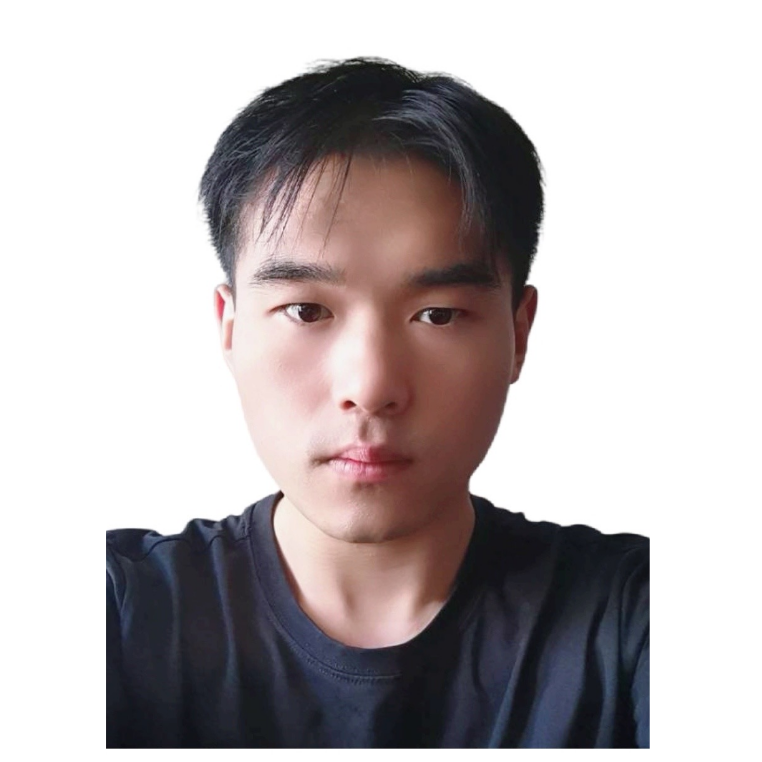
Numerical simulation of ice shelf and ocean interactions
Program 3: Sub-regional and Regional Antarctic Margins
My PhD project focuses on numerical simulations to gain a better understanding of the interaction of ice shelves and oceans on the submesoscale level, where baroclinic eddies dominate and accelerate the melting of sea ice and ice shelves. This project is designed to improve our understanding of how this interaction affects the ice melting and sea level rise, and further to make more accurate predictions of sea level rise. The simulations are performed using fine-scale engineering-based tools in computational fluid dynamics, including Direct Numerical Simulation and Large Eddy Simulation. The goal is improving existing parameterisations of ice shelf melting in regional ocean models, large- scale ocean models and climate models. The fluid dynamics simulations are used to test and improve parameterisations of ice shelf and ocean interactions. The main tasks are diving deeply into developing and implementing ice shelf and ocean interaction algorithms and testing parameterisations in ocean models.
My project aligns with this ACEAS project in two main aspects. First, my project places great importance on ice melting, which is one of the specific goals of “Sub-regional and Regional Antarctic Margin”. We will examine the basal melting of ice shelves under the influence of submesocale eddies and try to understand how this can impact the local ecosystems and climate changes. Additionally, once simulation results are obtained, we will try to analyse the response of the ice sheet to the submesoscale eddies and match simulation results with observational datasets. As a result, we can map the areas that are susceptible to rapid deglaciation. This is also one of the focuses of “Sub-regional and Regional Antarctic Margin”.

Past Dynamics of the Cook Glacier
Program 3: Sub-regional and Regional Antarctic Margins
The Cook Glacier drains a large proportion of the Wilkes Subglacial Basin in East Antarctica, a basin holding 3-4m of ice grounded below sea level. Geological and modelling studies suggest substantial inland retreat and sea level contribution from the Wilkes Subglacial Basin during past warm climate states and in future global warming scenarios. However, existing geological evidence does not directly reflect the Cook Glacier but integrates regional changes. This PhD project will focus on sediment archives adjacent to the Cook Glacier, to separate upstream changes in the Ross Sea, from records that integrate the response of glaciers further west. The project will use new sediment cores from the continental slope collected by the Italian RV Laura Bassi. New data will be used to interrogate models of sediment erosion and transport to test the relationship between sediment provenance and grounding line position. This will then aid in defining the most likely state of the ice sheet and explore the impact of ice sheet change on the surrounding ocean.
